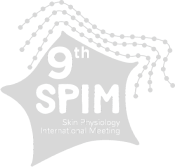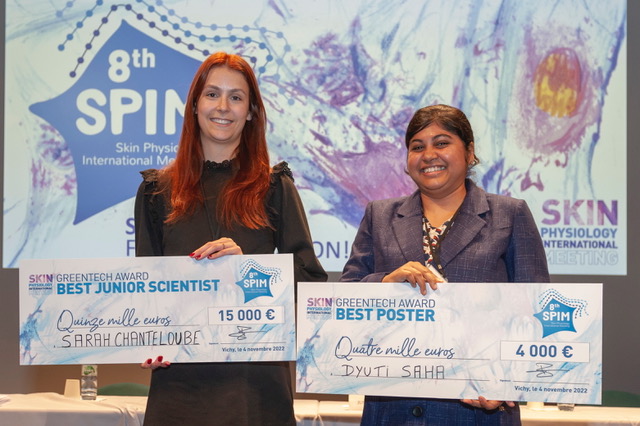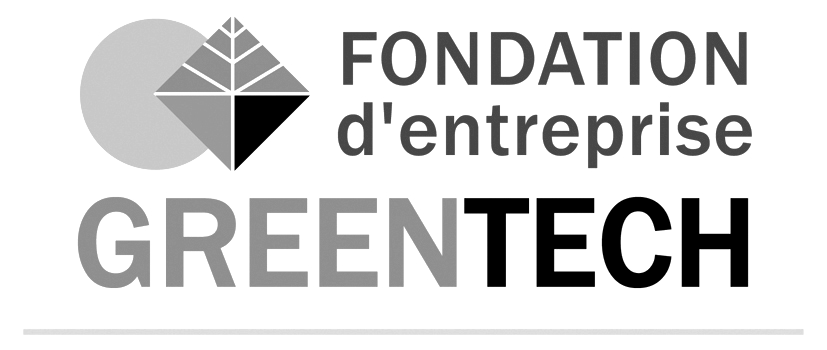The Scientific Committee selected the “Best Junior Scientist 2022“ among the 9 young researchers (PhD or post-PhD) nominated and invited to present their results to Scientists and Industrials coming from the Dermatology and Cosmetic Worlds.
The Scientific Committee awarded a young and expert scientist for her outstanding work, Ms Sarah CHANTELOUBE, a PhD student working under the supervision of Dr Romain DEBRET in the Tissue Biology and Therapeutic Engineering Laboratory (LBTI), a mixt research unit of the French National Center for Scientific Research (CNRS) and the University Claude Bernard Lyon 1 (UMR 5305) hosted by the Institute of Biology and Chemistry of Proteins (IBCP) in Lyon.
She received the grant of €15,000.
Her scientific project was:
« Strong overexpression of GPRC5A (G Protein-Coupled Receptor Class C Group 5 Member A) in keratinocytes from the skin wound edges was previously observed in vivo, but also in response to stiffness modulations in vitro, concomitantly to the translocation of its C-terminal region into the nucleolus.
To better understand the role of this receptor in keratinocyte mechano-sensing, GPRC5A knock-down was performed in N/TERT-1 cells using a short-hairpin RNA approach, and a recombinant polypeptide mimicking the C-terminal region of GPRC5A (GPRC5A-Cter) was tested to rescue cell phenotype.
Our results demonstrate a new molecular signalling in keratinocytes implicating the C-terminal region of GPRC5A. Moreover, the use of GPRC5A-Cter polypeptide allows partial rescue and would offer an interesting tool to improve the re-epithelialization step ».
Concerning the « Best SPIM Poster 2022 », Dyuti SAHA’s poster was selected by all participants and received the grant of €4,000.
She is a PhD student working in Dr Colin Jamora’s Laboratory at the Institute for Stem Cell Science and Regenerative Medicine in Bangalore, India.
Her scientific topic was : The neuropeptide Substance P modulates fibroblast responses during the cutaneous wound healing program
This study investigated the role of the neuropeptide Substance P (SP) during the cutaneous wound repair. It was found that SP can modulate the behavior of primary human dermal fibroblasts by promoting a transition from inflammatory to proliferation-associated responses. Fibroblasts were grown on a substrate that recapitulated the mechanical properties of in-vivo tissue, revealing novel functions of SP on dermal fibroblasts including an inhibition of the inflammatory response. Further, SP promoted activities crucial to the proliferation phase such as promoting expression of extracellular matrix components and producing angiogenic signals. Interestingly, the effect of SP was reduced upon ageing of the fibroblasts and SP levels were decreased in skin of patients suffering from inflammatory diseases such as scleroderma and psoriasis. Thus, this work raises the interesting possibility of using SP in therapeutic approaches to treat chronic wounds and diseases with an « inflammation signature ».











